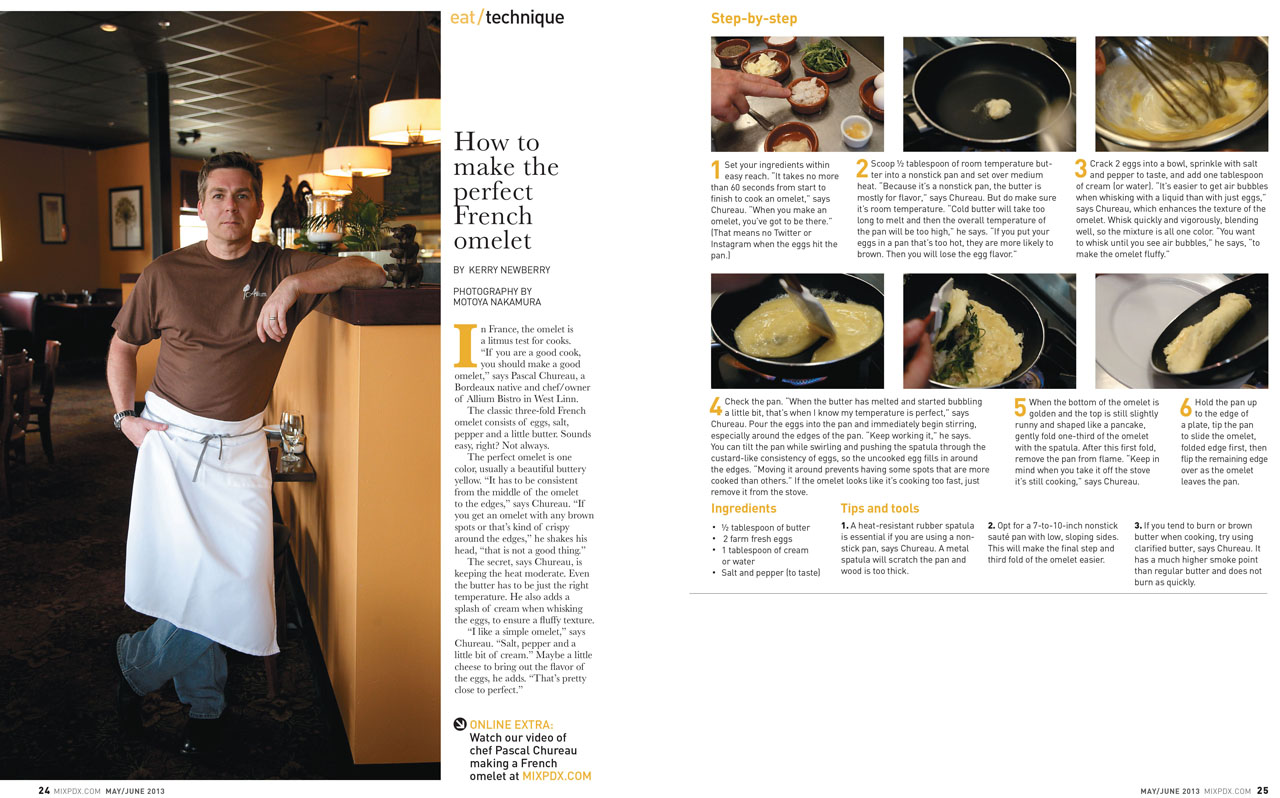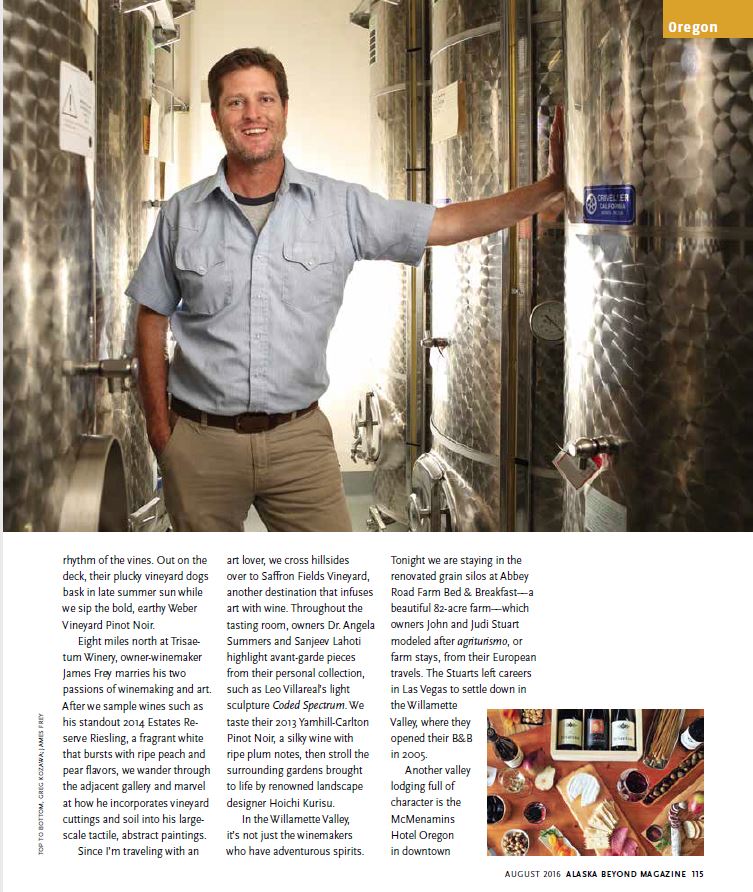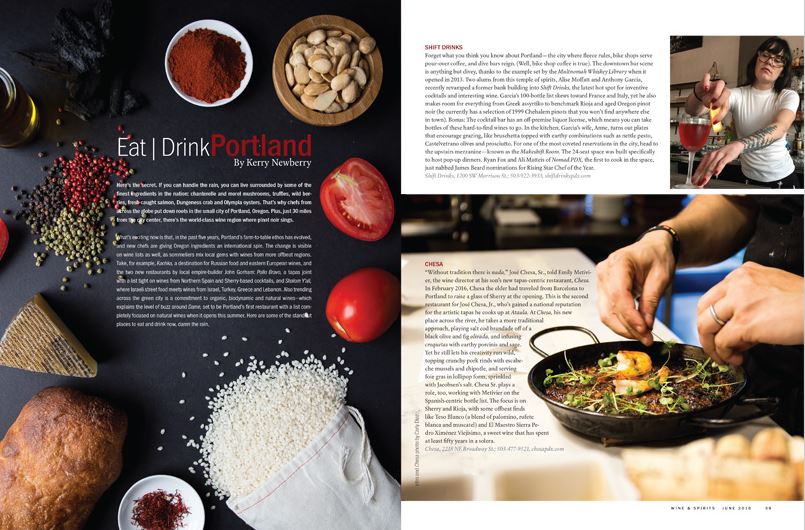Making the Perfect French Omelet with Chef Pascal Chureau

Oregonian’s MIX Magazine, August 2013
In France, the omelet is a litmus test for cooks. “If you are a good cook, you should make a good omelet,” says Pascal Chureau, a Bordeaux native and chef/owner of Allium Bistro in West Linn.
The classic three-fold French omelet consists of eggs, salt, pepper and a little butter. Sounds easy, right? Not always.
The perfect omelet is one color, usually a beautiful buttery yellow. “It has to be consistent from the middle of the omelet to the edges,” says Chureau. “If you get an omelet with any brown spots or that’s kind of crispy around the edges,” he shakes his head, “that is not a good thing.”
The secret, says Chureau, is keeping the heat moderate. Even the butter has to be just the right temperature. He also adds a splash of cream when whisking the eggs, to ensure a fluffy texture.
“I like a simple omelet,” says Chureau. “Salt, pepper and a little bit of cream.” Maybe a little cheese to bring out the flavor of the eggs, he adds. “That’s pretty close to perfect.”
1. Set your ingredients within easy reach. “It takes no more than 60 seconds from start to finish to cook an omelet,” says Chureau. “When you make an omelet, you’ve got to be there.” (That means no Twitter or Instagram when the eggs hit the pan.)
2. Scoop 1/2 tablespoon of room temperature butter into a nonstick pan and set over medium heat. “Because it’s a nonstick pan, the butter is mostly for flavor,” says Chureau. But do make sure it’s room temperature. “Cold butter will take too long to melt and then the overall temperature of the pan will be too high,” he says. “If you put your eggs in a pan that’s too hot, they are more likely to brown. Then you will lose the egg flavor.”
3. Crack 2 eggs into a bowl, sprinkle with salt and pepper to taste, and add one tablespoon of cream (or water). “It’s easier to get air bubbles when whisking with a liquid than with just eggs,” says Chureau, which enhances the texture of the omelet. Whisk quickly and vigorously, blending well, so the mixture is all one color. “You want to whisk until you see air bubbles,” he says, “to make the omelet fluffy.”
4. Check the pan. “When the butter has melted and started bubbling a little bit, that’s when I know my temperature is perfect,” says Chureau. Pour the eggs into the pan and immediately begin stirring, especially around the edges of the pan. “Keep working it,” he says. You can tilt the pan while swirling and pushing the spatula through the custard-like consistency of eggs, so the uncooked egg fills in around the edges. “Moving it around prevents having some spots that are more cooked than others.” If the omelet looks like it’s cooking too fast, just remove it from the stove.
5. When the bottom of the omelet is golden and the top is still slightly runny and shaped like a pancake, gently fold one-third of the omelet with the spatula. After this first fold, remove the pan from flame. “Keep in mind when you take it off the stove it’s still cooking,” says Chureau.
6. Hold the pan up to the edge of a plate, tip the pan to slide the omelet, folded edge first, then flip the remaining edge over as the omelet leaves the pan.
Tips and tools
- A heat-resistant rubber spatula is essential if you are using a nonstick pan, says Chureau. A metal spatula will scratch the pan and wood is too thick.
- Opt for a 7-to-10-inch nonstick saute pan with low, sloping sides. This will make the final step and third fold of the omelet easier.
- If you tend to burn or brown butter when cooking, try using clarified butter, says Chureau. It has a much higher smoke point than regular butter and does not burn as quickly.




